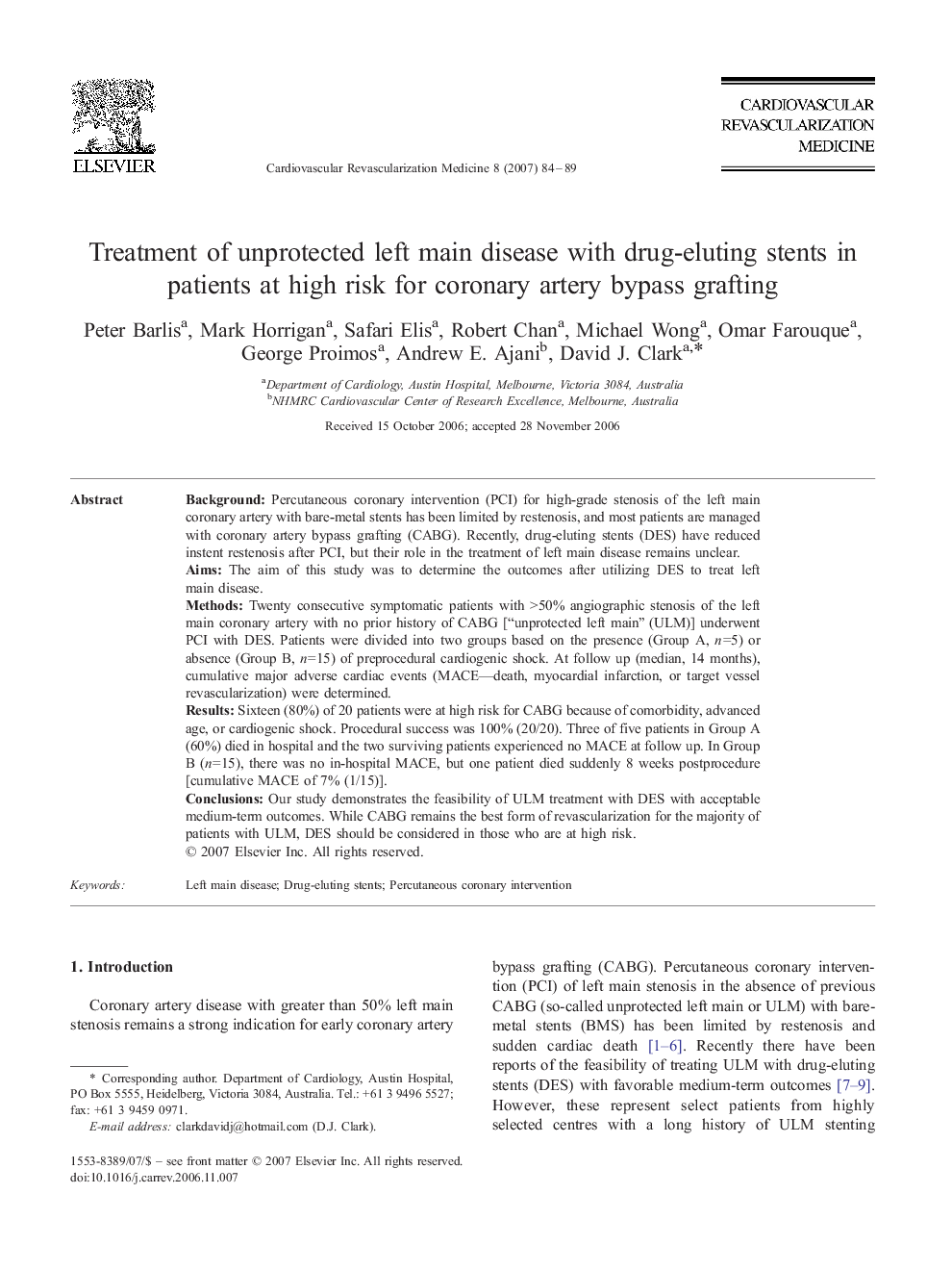| Article ID | Journal | Published Year | Pages | File Type |
|---|---|---|---|---|
| 2838037 | Cardiovascular Revascularization Medicine | 2007 | 6 Pages |
BackgroundPercutaneous coronary intervention (PCI) for high-grade stenosis of the left main coronary artery with bare-metal stents has been limited by restenosis, and most patients are managed with coronary artery bypass grafting (CABG). Recently, drug-eluting stents (DES) have reduced instent restenosis after PCI, but their role in the treatment of left main disease remains unclear.AimsThe aim of this study was to determine the outcomes after utilizing DES to treat left main disease.MethodsTwenty consecutive symptomatic patients with >50% angiographic stenosis of the left main coronary artery with no prior history of CABG [“unprotected left main” (ULM)] underwent PCI with DES. Patients were divided into two groups based on the presence (Group A, n=5) or absence (Group B, n=15) of preprocedural cardiogenic shock. At follow up (median, 14 months), cumulative major adverse cardiac events (MACE—death, myocardial infarction, or target vessel revascularization) were determined.ResultsSixteen (80%) of 20 patients were at high risk for CABG because of comorbidity, advanced age, or cardiogenic shock. Procedural success was 100% (20/20). Three of five patients in Group A (60%) died in hospital and the two surviving patients experienced no MACE at follow up. In Group B (n=15), there was no in-hospital MACE, but one patient died suddenly 8 weeks postprocedure [cumulative MACE of 7% (1/15)].ConclusionsOur study demonstrates the feasibility of ULM treatment with DES with acceptable medium-term outcomes. While CABG remains the best form of revascularization for the majority of patients with ULM, DES should be considered in those who are at high risk.
